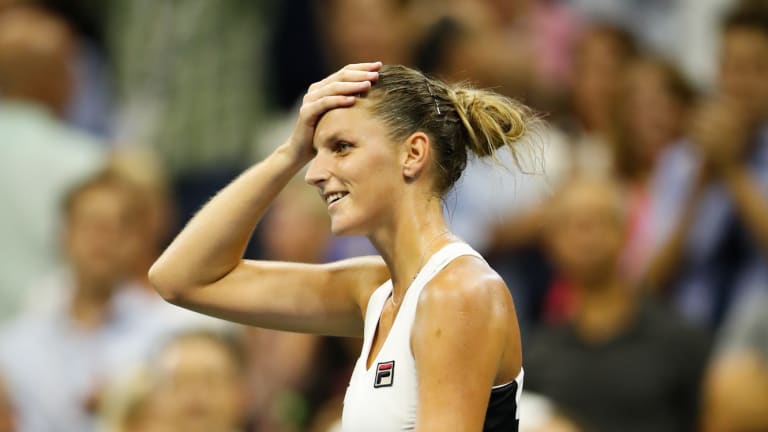NEW YORK—This wasn’t as bad as last year.
When Serena Williams lost to Roberta Vinci in the U.S. Open semifinals in 2015, she said that, emotionally, she fell into a “dark place” afterward. She felt like she’d gotten people’s hopes up that she could do something “really great”—i.e., win the first calendar-year Grand Slam since 1988—only to let them down at the very end. As her defeat at Vinci’s hands reverberated around the sports world, Serena cut her press conference short and didn’t appear on a court again for four months.
A year later, when Serena lost in the same round to Karolina Pliskova, 6-2, 7-6 (5), the crowd in Arthur Ashe Stadium was surprised and somber, but it didn’t feel like the world had shifted underneath their feet, the way it had after the Vinci match. In her presser, Serena was also somber, but not as devastated or tight-lipped as last year. This was a tough defeat, of course. Serena lost the No. 1 ranking, and thus ended in a tie with Steffi Graf for the longest streak of consecutive weeks at No. 1, with 186. Serena also lost a chance to snap another tie with Steffi Graf, at 22 major titles.
Not breaking the No. 1 record will hurt. “I don’t want to talk about that whatsoever,” Serena said. But this defeat was a little more comprehensible than the one to Vinci, for a couple of reasons.
First, as we learned afterward, Serena was playing with an injured left knee. She said she picked it up “after the second or third round,” while her coach, Patrick Mouratoglou, said it happened in the third set of her match the previous night against Simona Halep. Serena was definitely off; she made 31 unforced errors in 21 games. After a dismal first set, she fought to find some semblance of her usual form in the second set, but she never did. Serena began the second-set tiebreaker with two backhands that landed 10 feet long. She finished the breaker, and the match, with another backhand long and a double fault.

